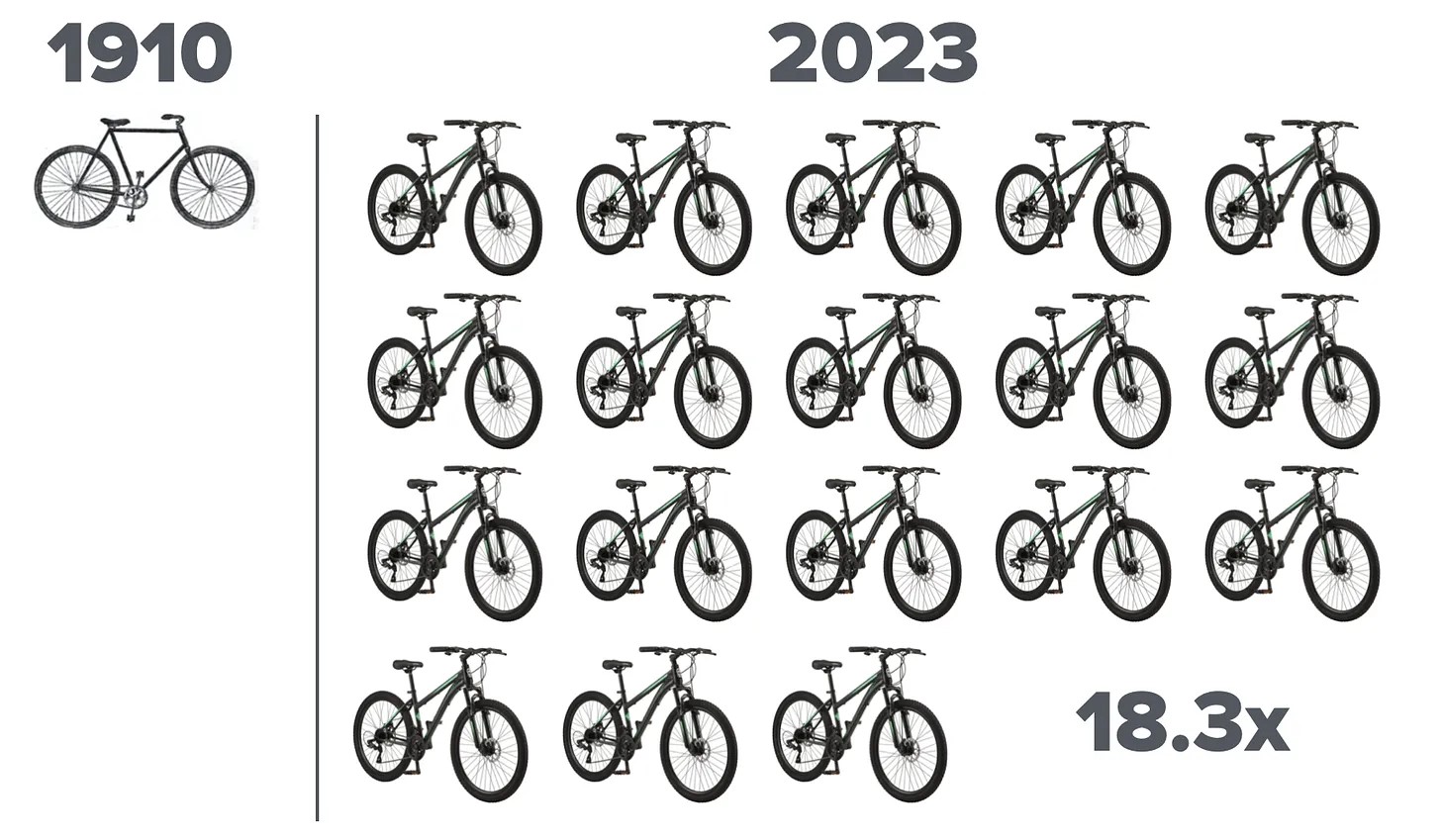Wealth & Poverty Review Things Used to Cost Less but They Were Much More Expensive
Originally published at Gale Pooley's SubstackWe buy things with money, but we pay for them with our time. This means there is a money price, which is expressed in dollars and cents, and a time price, which is expressed in hours and minutes. A time price is simply the money price divided by hourly wages. For example, if a pizza costs $20 and you are earning $20 an hour, the pizza costs you one hour, or 60 minutes. If the price of the pizza goes up to $22, but your hourly wage rate increases to $24, the time price has actually fallen by five minutes to 55 minutes. Your hour at $24 will now buy you 1.09 pizzas. Your personal pizza abundance has increased by 9 percent.

We analyzed the historical time prices of hundreds of products in our book Superabundance and compared them to today’s time prices. What we found was quite surprising. For example, in 1910 you could buy a bicycle for $11.95 from the Sears Roebuck catalog. This sounds like a good deal until you realize that unskilled hourly compensation was 11 cents an hour. This means that it would take 108.6 hours to earn the money to buy one bicycle.
Today you can buy a bike at Walmart for $98. The nominal price has increased by 720 percent. But hourly compensation has increased 14,900 percent. Today unskilled workers earn around $16.50 per hour. This puts the 2023 time price at around 5.9 hours. If the time price of a bicycle had stayed the same since 1910, one would cost around $1,792 today (66.4 hours x $16.50).
The time price has fallen by 94.5 percent from 108.6 hours to 5.9 hours. For the time required to earn the money to buy one bicycle in 1910, you will get over 18 today. This represents a 1,730 percent increase in bicycle abundance. This astonishing increase in bicycle abundance occurred while global population increased 357 percent from 1.75 billion to 8 billion.

Time is Better than Money for Measuring
There are six reasons that time is a better way to measure than money. First, time prices contain more information than money prices. Since innovation lowers prices and increases wages, time prices more fully capture the benefits of valuable new knowledge and the growth in human capital. To just look at prices, without also looking at wages, only tells half the story. Time prices make it easier to see the whole picture.
Second, time prices transcend all of the complications associated with trying to convert nominal prices to real prices. Time prices avoid the subjective and disputed adjustments such as the Consumer Price Index (CPI), the GDP Deflator or Implicit Price Deflator (IPD), the Personal Consumption Expenditures price index (PCE), and Purchasing Power Parity (PPP). Time prices use the nominal price and the nominal hourly income at each point in time, so inflation adjustments are not necessary.
Third, time prices can be calculated on any product with any currency at any time and any place. This means you can compare the time price of bread in France in 1850 to the time price of oranges in New York in 2024. Analysts are also free to select from a variety of hourly income rates to use as the denominator to calculate time prices.
Fourth, time is an objective and universal constant. As George Gilder has noted, the International System of Units (SI) has established seven key metrics, of which six are bounded in one way or another by the passage of time. As the only irreversible element in the universe, with directionality imparted by thermodynamic entropy, time is the ultimate frame of reference for all measured values. Time is the most constant of the constants.
Fifth, time cannot be inflated or counterfeited. It is both fixed and continuous. Everyone has perfect time equality with 24 hours a day.
Sixth, we have perfect equality of time with exactly 24 hours in a day. We should be comparing time inequality, not income inequality. If you measure differences in time inequality instead of income inequality, you get an entirely different picture.
These six reasons make using time prices superior to using money prices for measuring resource abundance. Time prices are elegant, intuitive, and simple. They are the true prices we pay for the things we buy in life.

